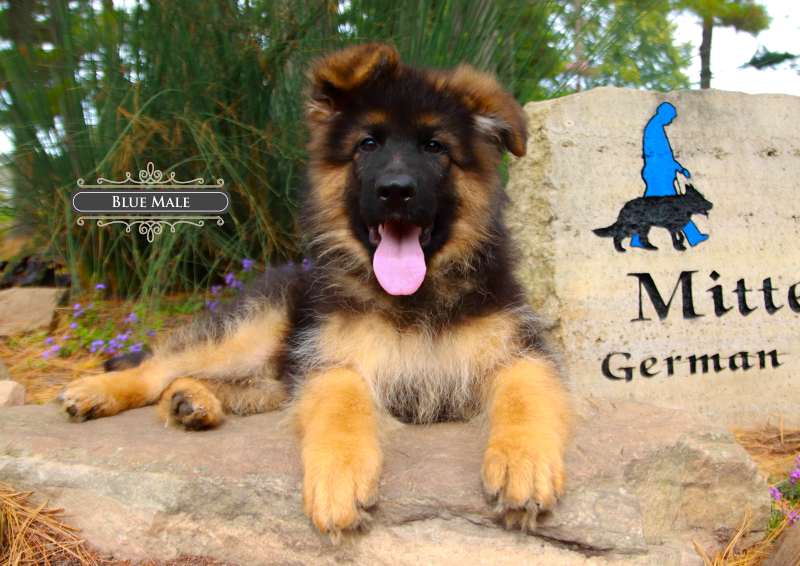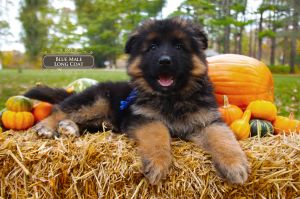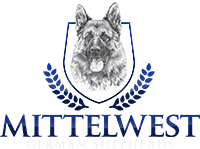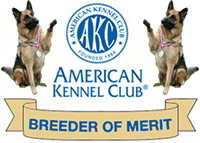Key Points:
Long-haired German Shepherd puppies are intelligent, loyal, and energetic. Raising them successfully requires planning, structure, and patience. From grooming and training to diet and bonding, each detail impacts behavior and health. These puppies need consistent routines, early socialization, and ongoing enrichment. Knowing their grooming needs and temperament helps avoid common missteps. A strong foundation builds a confident, obedient adult dog.

Bringing home a long haired German Shepherd puppy is exciting, but it comes with real responsibility. They grow fast, think fast, and respond best to homes that give structure and time from the beginning.
Raising one is about planning, patience, and practice. With guidance, consistency, and the right breeder, you’ll create a meaningful bond and raise a dog that’s loyal, balanced, and fun to live with.
Getting To Know The Long-Haired GSD Breed
Knowing what makes these dogs different is key to raising them right. Long-haired German Shepherds share traits with their short-haired cousins but stand out in grooming, appearance, and sensitivity.
Breed Characteristics
Long-haired German Shepherds are smart and intuitive. They form deep attachments and protect their families with quiet confidence. They need both brain games and physical activity to stay balanced.
Grooming Needs
Their coats need consistent care. Regular brushing prevents tangles and discomfort. Seasonal shedding requires tools like undercoat rakes to keep the mess under control and the coat healthy.
Temperament Insights
They’re attentive, affectionate, and tuned into their people. Compared to their standard-coated siblings, they often show a more sensitive side. Respond best to encouragement, not harshness.
Knowing the breed sets the tone for everything else. From daily routines to long-term care, knowing what to expect helps prevent mistakes and builds confidence.
Preparing Your Home For A Puppy
A thoughtful home setup shapes better behavior from the start. Puppy-proofing and planning create safe, comfortable spaces where your dog can settle and learn routines fast.
Puppy-Proofing Essentials
- Secure wires, shoes, and toxic plants.
- Use baby gates to limit access.
- Create calm, defined spaces for rest and play.
Must-Have Supplies
- Crate, raised bowls, leash, collar, ID tags.
- Slicker brushes and grooming combs.
- Chew toys and brain puzzles for stimulation.
Setup Strategy
- Keep feeding and rest areas consistent.
- Introduce your pup to one room at a time.
- Avoid overwhelming sounds or guests for the first few days.
Early structure prevents chaos later. A well-prepared home makes potty training, sleeping, and boundaries easier for both you and your new pup.
Fueling With Nutrition & Feeding Guidelines
A long-haired German Shepherd’s diet supports brain development, bone growth, and coat health. Feeding them properly from day one prevents health issues and improves behavior.
Daily Diet Essentials
Feed a high-quality large-breed puppy formula with proper protein and calcium levels. Stick to three meals daily for six months, then shift to twice a day as they mature.
Coat-Supporting Nutrients
Add omega fatty acids for healthy skin and shine. Provide fresh water throughout the day. Treats should be clean and simple, single proteins or fruits like blueberries work well.
Foods To Avoid
Stay away from toxic items like grapes, onions, garlic, and chocolate. Don’t overfeed treats. Watch for weight gain, and avoid foods filled with empty fillers.
Good nutrition leads to clearer focus and fewer health issues. Your dog’s energy, coat condition, and mood will thank you for a balanced, intentional feeding routine.
Giving Proper Training & Socialization
Training starts the day your pup arrives. You’re not just teaching commands, you’re shaping how your dog views the world and interacts with it.
Early Training Priorities
- Teach “sit,” “come,” “stay,” and name recognition.
- Use positive reinforcement with treats or toys.
- End sessions on a win to build confidence.
Socialization Strategies
- Introduce dogs, people, surfaces, and noises slowly.
- Praise curiosity and calm reactions.
- Visit different places like parks and patios as they grow.
Daily Routine Suggestions
- 2–3 short training sessions each day.
- Social walks where they see but don’t always interact.
- Expose your pup to vet offices and car rides early.
Training and socialization build a stable adult dog. Structure, praise, and patience will help your GSD learn faster and stay balanced in any environment.
Outlining Health & Veterinary Care
Preventive care keeps your dog safe, strong, and resilient. Vet visits catch issues early and build the foundation of lifelong wellness.
First-Year Veterinary Checklist
Make sure your puppy gets all core vaccines like parvovirus, distemper, and rabies. Stick to the deworming schedule and use monthly flea and tick preventatives. Track their growth to monitor joint and weight development.
Common Health Concerns
Watch for signs of hip and elbow dysplasia, uneven movement, or discomfort are red flags. Closed ear flaps make ear infections more likely, so check them regularly. Keep the coat brushed to prevent painful mats and hot spots.
Vet Relationship Tips
Keep health records current and accessible. Don’t hesitate to ask your vet about diet, behavior, or activity guidelines. After the first year, schedule routine checkups to maintain long-term health.
Proactive care pays off long term. A healthy dog trains better, behaves better, and enjoys life more when their body feels good.
Providing Exercise & Mental Stimulation
Smart dogs need more than space; they need purpose. Mental and physical stimulation channels energy into good behavior instead of destruction or anxiety.
Daily Activity Recommendations
Give your pup a mix of walks, fetch, tug, and agility games. Short training sessions keep their body and brain engaged. Avoid stairs and jumping early to protect developing joints.
Mental Workouts
Use puzzle feeders during meals to stimulate their minds. Hide toys or treats for them to find. Rotate in new commands weekly to keep them thinking and challenged.
Warning Signs Of Boredom
Look out for nonstop barking, digging, or destructive chewing. If your dog’s doing laps around the house, it’s time to add more stimulation to their day.
Exercise resets behavior and builds a bond. A tired puppy is a well-behaved puppy, and a happier one too.
Maintaining Grooming & Coat Care
A long-haired coat requires consistent upkeep. Neglect leads to mats, skin infections, and discomfort. Grooming becomes a bonding activity when started early and done regularly.
Weekly Grooming Routine
Brush your pup 3–4 times a week using a slicker brush and undercoat rake. Trim nails every couple of weeks, and clean ears monthly. Always check paws for trapped debris.
Seasonal Adjustments
Brush more often in spring and fall when shedding ramps up. In winter, wipe paws after walks to remove salt or grit. Bathe only as needed; every 4–6 weeks usually works well.
Tips For Easier Grooming
Stay calm and use treats to keep your pup relaxed. Don’t yank out tangles, use spray, and go slow. If they get squirmy, split grooming into shorter, manageable sessions.
Grooming prevents bigger problems and teaches trust. Start young, keep it positive, and you’ll have a clean, comfortable pup who loves the brush.
Building A Strong Bond With Your Pup
Bonding shapes how your dog listens, learns, and behaves. Time spent together becomes the foundation for trust and long-term cooperation.
Reading Canine Communication
- Ears up = alert; tail wag = interest or comfort.
- Lip licking and yawning can signal stress.
- Learn their cues; each dog is different.
Daily Bonding Habits
- Practice training with eye contact and a soft tone.
- Include your dog in routines like yard work or errands.
- Pet intentionally. Scratches, not just pats.
Trust-Building Activities
- Obedience games that include rewards and praise.
- Controlled off-leash time in fenced areas.
- Shared rest time (lying nearby builds calm closeness).
The bond is your greatest training tool. Trust means your dog listens not just because they have to, but because they want to.

Mittelwest Breeds World-Class German Shepherds
At Mittelwest German Shepherds, we raise German Shepherds who are confident, intelligent, and family-ready. Our long-haired puppies come from championship lines and are raised with early socialization, structured routines, and careful training.
With over 30 years of focused breeding, Mittelwest produces dogs with health-tested bloodlines and strong structure. Each puppy receives one-on-one care to support their physical and emotional growth.
We provide trained puppies and young adults, personalized obedience programs, and private training options. Every family gets lifetime support, from first inquiry through every stage of ownership.
We don’t just breed dogs, we help build families. Whether you’re a first-timer or a returning client, we’re here to help you raise your long-haired German Shepherd with confidence and joy.













